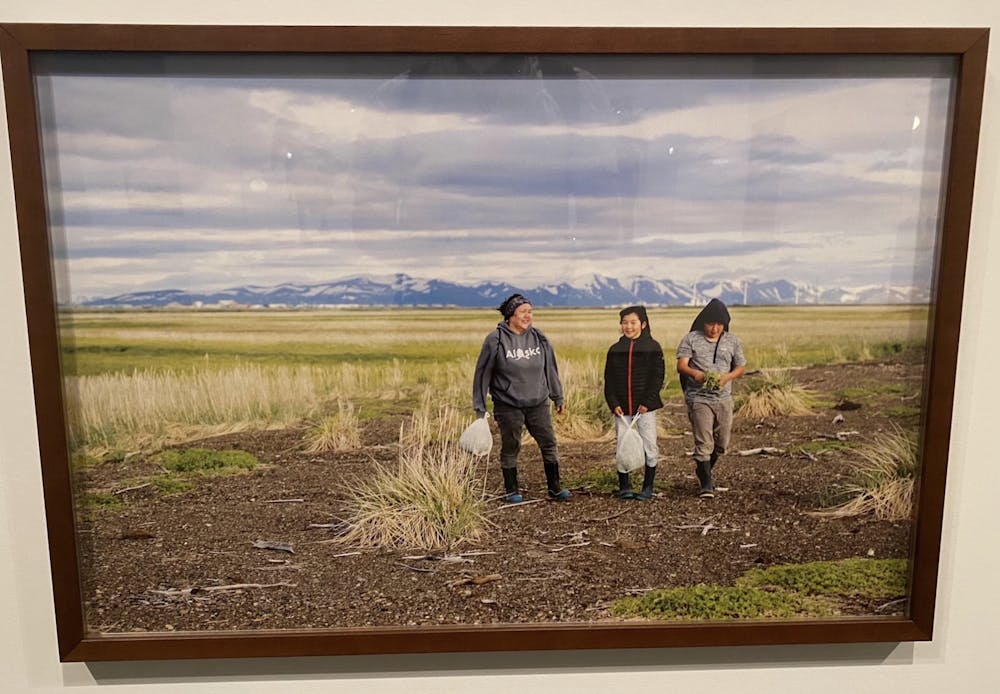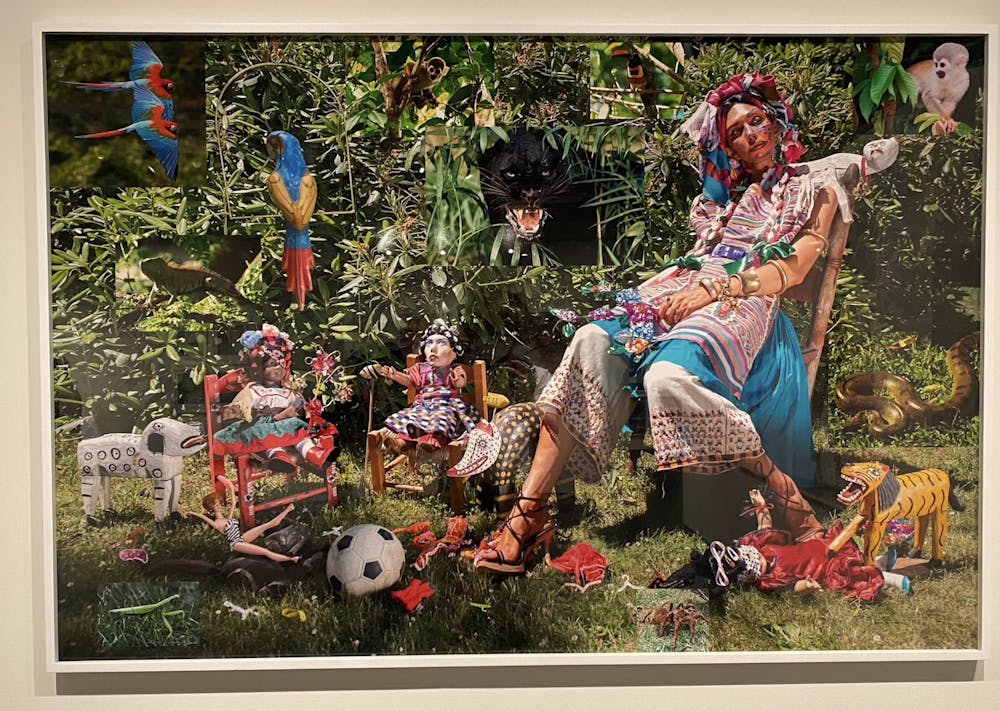It was a quiet and rainy Thursday evening when I biked past FitzRandolph Gate and through Palmer Square to Art on Hulfish, Princeton University Art Museum’s satellite facility, which was hosting Galleries on the Go: A Night of Art on the Town. Amid the evening’s festivities — the event included artmaking, food and drink, and live music — I was enthralled by “Native America: In Translation,” a photography collection by and about Native American artists. It was an important and complex collection that exemplified what photography is capable of as a medium.
Wendy Red Star curated the collection. Raised on the Apsáalooke reservation in Montana, her scholarship centers on historical narratives and how an artist can twist them for a new perspective.
Photography is an artistic medium, of course. But it’s also a direct mode of capturing history as it happens — a moment in time.
Jacqueline Cleveland, an artist from Quinhagak, Alaska, works in this way, by capturing her family’s traditions through her art. “I’ve been foraging as long as I can remember,” said Cleveland, as quoted in the wall label. A candid photograph of her family foraging through an Alaskan lea feels like a capsule of history.
The exhibit balances art and history. Cleveland’s photograph of her family positions their feet in the dirt, but their heads amid the clouds and mountains. The photograph reflects the subjects rooted in a specific place, yet connected to something more conceptual.

“Molly Alexie and her children after a harvest of beach greens in Quinhagak, Alaska,” Jacqueline Cleveland, 2018.
Gabriel Robare / The Daily Princetonian
But photography is more than direct expression. Duane Linklater contributed a series of photographs to the exhibit that combine text and spliced-together images to tell stories beyond any individual part.
One piece had a few indeterminate objects, stitched together with text reading “Head in Clouds, Minneapolis, Minnesota, 1992, photographer unknown.” But Linklater makes the photographer known, appropriating and remaking the original work and thus making the unknown known, in a different way.
This made me think, as I stood for a long time in front of his work, about how the presence of the artist is different in photography than in other media. To photograph is to apply an artist to that which wasn’t art before. Linklater combined diverse pieces and photographed them, and thus associated his name with it. This exhibition about Native American art is a decolonization effort, claiming images for his own after they’ve been taken. Note that in the text referenced above, Minnesota is a Dakota word, but Minneapolis is a bastardized Greek word. He claims the text for his own, after colonizers put their suffixes on it.
Martine Gutierrez is a transgender artist who juxtaposes hyperfeminine and Indigenous images to question what makes a “Native-born” woman. In my view, she made the best piece in the gallery: a bright jungle of objects, set out at a sort of plein air tea party, with a reposing Gutierrez as the centerpiece.
Gutierrez is dressed in traditional wear paired with strappy pumps. She wears numerous gold bracelets and long chains wrap around her neck. She nearly sleeps, with a heavily made-up face so indifferent as to bring Manet’s “Le déjeuner sur l’herbe” to mind. Dolls on small rocking chairs join her. On the grass around her — sur l’herbe, indeed — is a soccer ball, some model dogs, a ceramic parrot, some scraps of red fabric, and other various trinkets.

The scene is already crowded, but Gutierrez overlays photographs of animals all around to complete the jungle. A small monkey looks at the subject; a mountain lion prowls in the background; a spider crawls in the grass; parrots fly toward their ceramic counterparts; a snake slithers away.
None of them are really there but simply added after the fact. Yet in another way, all those animals are there, because photography brings all these objects into one collected frame. Gutierrez merges so many images seemingly in service of bright colors and striking construction to subvert the medium of historical photography — hyperpop in the jungle. The move to overlay so much content nods to how the medium is constructed, perhaps in the same way her identity is so carefully constructed from the parts she chooses.
Photographers decide what is in the frame — both by choosing what to exclude and what to add in. That choice is a tool to juxtapose, to create interactions. History is complicated by their decisions. “Native America” tells indigenous stories by taking their history and throwing art at it. Cleveland, Linklater, and Gutierrez take what really happened and chew on it, creating something new.
Gabriel Robare is a Senior Prospect Writer and Staff News Writer. He is also the Head Puzzles Editor. He can be reached on social @GabrielRobare or at grobare@princeton.edu.








